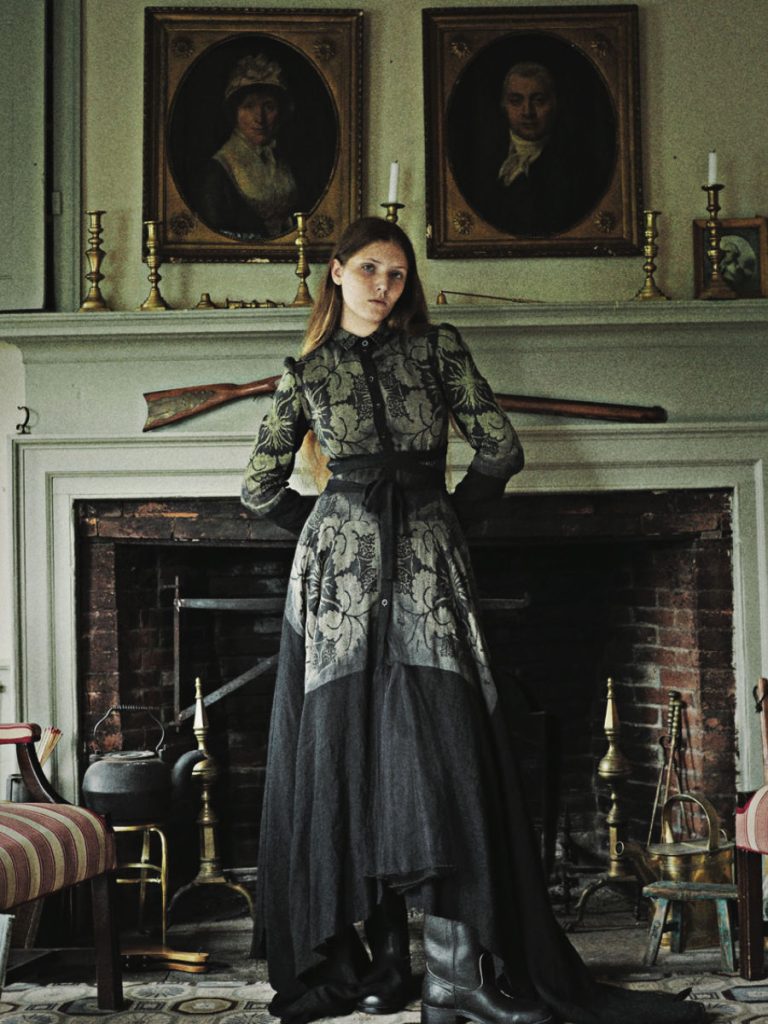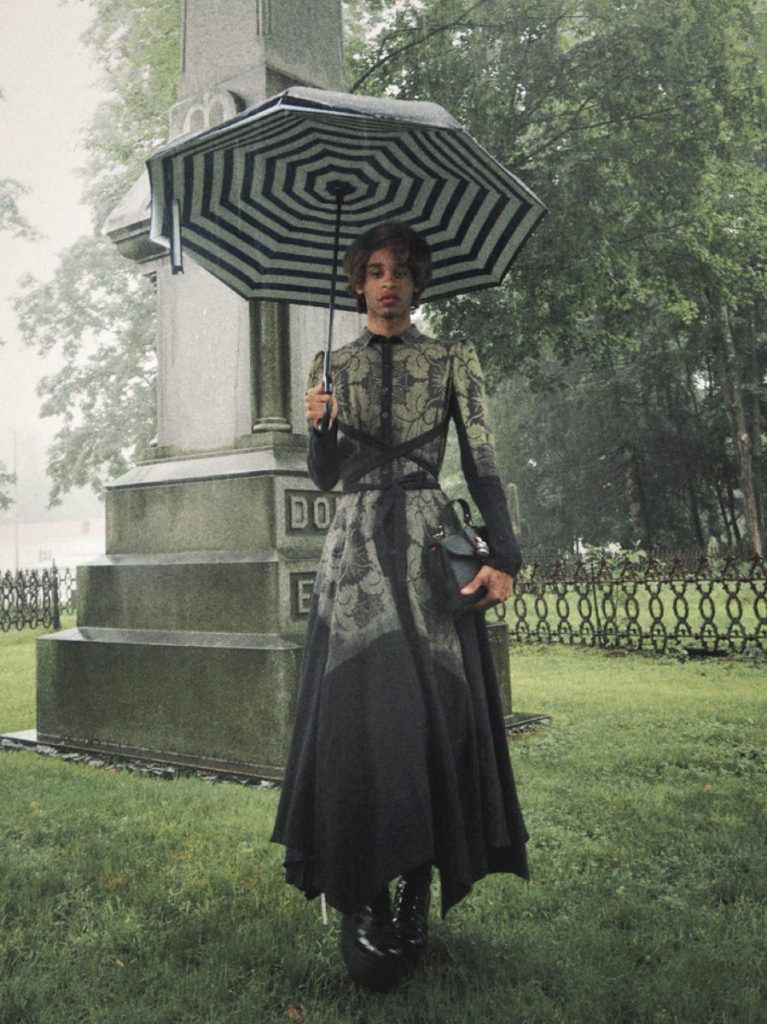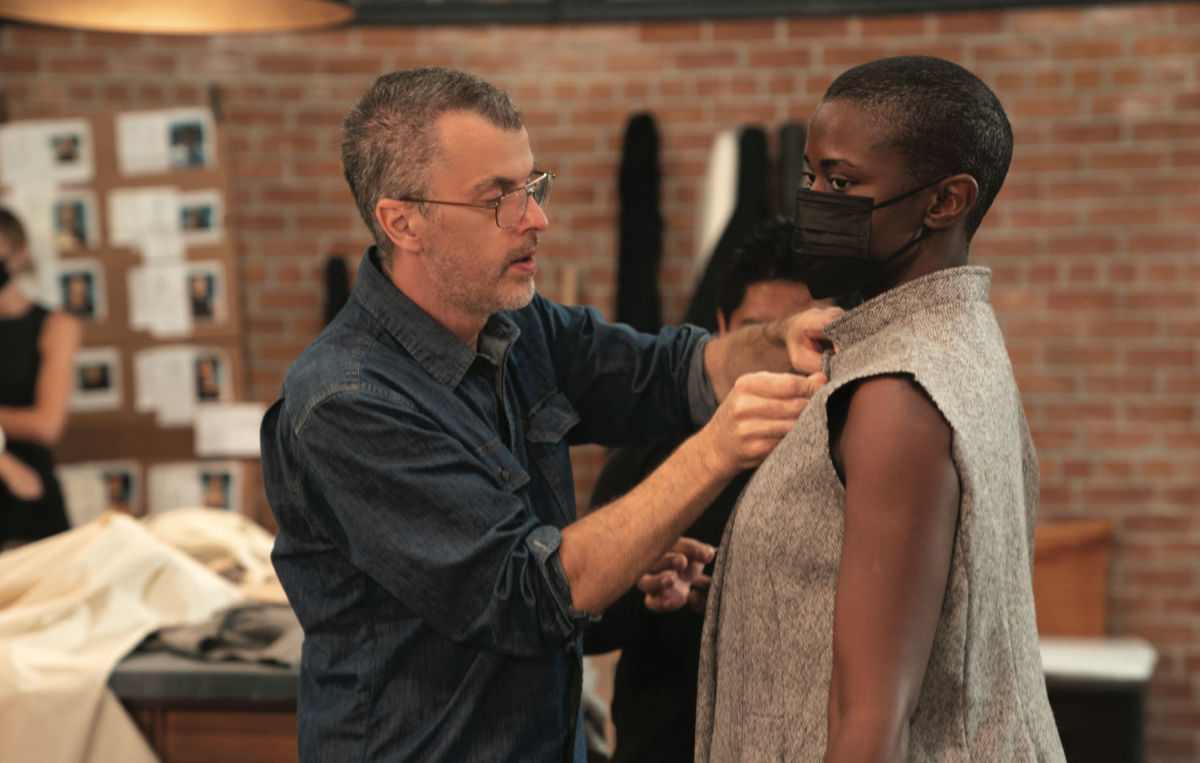By Susan Barnett
Franklin became internationally famous in the summer of 2021. A global audience tuned in to see a fashion competition and got a glimpse of Main Street, the edible walking trail behind the village park, and even the streets of Cherry Valley, although misidentified as Franklin.
The focus of the program was fashion designer Gary Graham, who was competing for a million dollars and a priceless boost for his business and brand on Amazon’s “Making the Cut.” If you don’t know how it all turned out, you might want to check out an episode before reading further. His presence on that show will tell you a lot about him.


Graham immediately stood out from the usual reality television personalities. He was real. He was humble. He even pitched in to help his competitors when they were in a jam. He was a remarkably likeable person, and before long he had a huge fan base, even among people who don’t much care about fashion. And though he was a runner up, his business has gone into overdrive since the show aired.
The story of GaryGraham422, named for the building he owns with Sean Scherer of Kabinett & Kammer at 422 Main Street in the village, begins in New York City, where Graham had an earlier store. Moving upstate to Andes with Scherer in 2018 was a massive transition.
“I was closing my old business,” Graham related, “Going from where my resources were huge and my budgets were huge, to having zero. So that really changed everything.”
But upstate offered things the city could not.
“One thing you learn about living in the city, despite all the great outdoor spaces there, is that you live a very interior life,” Graham explained. “I worked so many years in basements, behind other spaces, because that’s what you can afford. So, when we moved to Andes, I was suddenly working in light, and had access to the outdoors. Life up here, it revolves more around the outdoors.”
And outside, surrounded by scenery and history, Gary Graham has been feeding his inner storyteller. That storyteller has informed the fashions he has created here.
“What I love about Franklin is that each building has a history, and I’ve tried to weave the history of the building into the collection and into my store. In the beginning I was inspired by a photo of three women that’s on display in the community museum. And when I first moved here, I wanted to build on that story. That’s what I do. I explore the cemetery, and I make up stories about the names I see. Just being able to go outdoors and shoot – that’s had a big influence on me and the way I think about clothing. And it’s also about having more time.”
At first, Graham said he was just making enough dresses to pay his bills every month. That certainly offered a kind of freedom he had not had when his business was in New York City.
“The fewer responsibilities you have in terms of employees, the more freedom you have to live in your head, which being upstate allows me to do.” He paused. “Unless you turn into a multi-million-dollar corporation.”
Asked if he wanted that, he laughed. “I really don’t know.”
That kind of growth is within sight since Graham’s participation in “Making the Cut.” His impeccable tailoring and unique vision won him a second-place finish, but not before judge Jeremy Scott, creative director of Moschino, made an impassioned speech supporting Graham for the win, calling him a “true artist” and “the future of fashion.”

“It’s an interesting moment,” Graham said of the changes that have occurred since the show aired. “I went into the competition knowing I wanted to have this narrative-driven shopping experience located up here, which has involved a lot of filmmaking and history, so that’s still my mission. But what kind of business model do I create around it, and what is the scale?”
Thanks to his television success, Graham now has his own shop on Amazon. And not only can you find his fashions, but you can find sweatshirts, tops, and even cellphone cases inspired by his designs.
Another important local asset for a storytelling fashion designer is Rabbit Goody’s Thistle Hill Weavers in Cherry Valley. She is one of the world’s foremost experts on historic fabrics, and her small Otsego County mill produces historic textiles for museums, historic sites and films. And for GaryGraham422.
“I didn’t have an in with her,” he said. “I didn’t know her, and I didn’t know anyone who knew her.”
So, despite money being tight, he bought as much of her most expensive fabrics as he could at her annual holiday sale. And he designed clothes with them. And gradually, a relationship began.
“I slowly wormed my way in, and now we’re friends and we love each other. Fabric can take up to six months to make, so it’s very different from the way fashion usually works. You have to be flexible in terms of your conceits and your esthetic decisions. But it’s amazing, being there at the origin of the cloth.”
But he needs the right help to transform that cloth into the clothing he envisions. Graham says the biggest obstacle to running his business upstate is finding skilled labor.
“For a fashion company, there’s really very specialized, skilled labor. There aren’t many, or even any people who sew professionally up here. I’ve gone to refugee centers in Utica and Buffalo. You have to be prepared for relocation for your employees. You have to be able to attract talent and have places for them to live. And how does that affect the community?”
Other businesses may be embracing remote work, but Graham says his business just can’t work that way.
“I don’t think you can be a manufacturer remotely if you want to create locally,” he explained. “I mean right now I’m manufacturing in Peru and in China, but the core of my company will always be where my business is.”
Interestingly, the physical store, despite drawing an increasing number of visitors immediately after the show, is not, and never has been, a major part of Graham’s retail income.
“Only two percent of my business comes from my store,” he said. “That hasn’t changed. There’s a huge disconnect between the brick-and-mortar and the digital.”
The retail space is not open during the week, but that does not mean it’s quiet. During the week, Graham and his staff are busy on two floors, and things are constantly coming and going. But all that activity is hidden from the street.
“I don’t think people around here understood what I’m doing – I mean maybe since the show they do a bit more, but there aren’t many people up here doing this. I am a global company in a very small town. We ship all over the world. But people just see me walking the dog.”
In the digital world, and in the world of fashion, Gary Graham’s star is ascending.
“I have over fifty thousand followers now. I get thousands of direct messages a day. But with all that support and love, I still have the same plan, to build this narrative-driven shopping experience. With the Amazon Store, you can see the Marion film, that was done entirely in Delaware County, and it all networks with the YouTube channel and my own website. But now, I have the opportunity to reach much wider and farther.”
It is clearly a path to business success. And for Graham, that also means a sense of personal achievement.
“For me, there’s no difference between personal and business success. My work is personal. If I’m traveling the world, meeting all these makers, then bringing it back to Franklin, that, to me, would be a really great lifestyle.” Coco in Treadwell Photo by Gary Graham
Follow Gary online: @GaryGraham422.com
